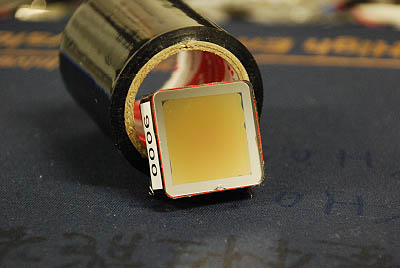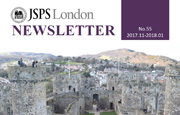JSPS Fellow's Experiences in Japan
Dr. Morgan Murray
JSPS Short Term Award
Host institute: Nagoya University (January 2009 - March 2009)
My Experiences in Japan
I am a post-doctoral research associate at the physics department of the University of Glasgow. I applied for a JSPS fellowship in order to study the development of detectors for High Energy Physics at Nagoya University. I would be at Nagoya for two months from January 2009. As part of my study I would travel to Hamamatsu Photonics in Hamamatsu City, as it is this private company that builds an essential component of the detector - the micro-channel plate photomultiplier tube (MCP-PMT), which detects photons produced in the detector created by a throughput of particles.
The Institute
The University of Nagoya is one of the top five universities in Japan, and plays a leading role in the BELLE collaboration at KEK in Tsukuba. The laboratory to which I was attached has approximately 30 people, including one professor and three associate professors. I was given a desk in the laboratory and accommodation was arranged in University facilities. This comprised a bed, desk, wardrobe, TV and laundry facilities in a private room with a private bathroom, and kitchenette.
Work Arrangements
I arrived on a Monday evening and started work properly on the Wednesday. I was shown the laboratory facilities and shown how basic equipment worked. I was also introduced to the people in the laboratory. On the Thursday night there was a welcome party for me in the laboratory, where I tried many traditional Japanese foods and, of course, sake. Working arrangements were productive, and I spent the first four weeks or so writing software and making measurements of photo-multiplier tubes in the laboratory. I then spent one week or so preparing a seminar talk to be given by in the department which I gave in the first week of March. I also took the opportunity to travel to Hamamatsu and talk to the producers of the tubes. We discussed their plans for increasing the efficiency and durability of the equipment.
Figure 1: Photograph of an MCP-PMT detector. The detector is 25x25 mm and is used to detect light produced by particles passing through a radiator material in a High Energy Physics detector. For the final two weeks, I travelled to Tsukuba to meet with colleagues at the TIPP conference, and visit J-PARC in Tokai. J-PARC is a major scientific development in Japan, featuring state-of-the-art facilities for nuclear and particle physics. I was accompanied by a post-doctoral researcher from Nagoya University who was also interested to view the facilities, and translated and acted as a guide. I then returned to the laboratory and made preparations for returning to Scotland, including documenting the improvements I had made to analysis software, and writing a research report on my time in Nagoya. Two nights before I left the laboratory we had a farewell party where the staff at Nagoya took me to a fugu restaurant, which was very interesting.
Conclusions
The fellowship was extremely useful for my understanding of photo-multiplier tubes. I gained a better understanding of the state-of-the-art in electronics development, and enjoyed seeing a different working culture. My time in Japan was also interesting and useful to me personally-I met a lot of new people, and made many new friends. I would happily recommend a JSPS Fellowship to any interested party as a way to learn not only about new techniques of research but also a different culture.
I can be contacted at the following address:
Rm. 515a Kelvin Building
Physics & Astronomy Dept.
University of Glasgow
Glasgow
G12 8QQ
Scotland






